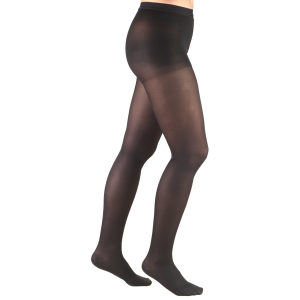



Bauerfeind Women VenoTrain Micro Knee High Stockings
$199.00
30-40 mmHg Compression Level
Product successfully added to the Quote List
Description
The Bauerfeind VenoTrain compression stockings are a well-known line of medical compression wear, designed to support blood circulation and alleviate issues like varicose veins or swelling. Specifically, the knee-high version with 30-40 mmHg compression falls into the Class II to III compression range, which is typically recommended for more severe venous insufficiencies, deep vein thrombosis (DVT) prevention, and managing chronic venous diseases.
Key Features:
- 30-40 mmHg Compression: Strong therapeutic compression for effective treatment of serious vein disorders.
- Knee-High Design: Covers the leg from foot to just below the knee, ideal for localized support without thigh coverage.
- Graduated Compression: Maximum pressure at the ankle, gradually decreasing as it moves up the leg, which promotes blood flow back to the heart.
- Durable and Breathable Material: Often made of high-quality synthetic fibers for a comfortable fit and long-lasting wear.
- Indications for Use: Recommended for patients with conditions like deep vein thrombosis, varicose veins, severe leg swelling, post-surgical recovery, or other venous insufficiencies.
Size Measurements
For Bauerfeind VenoTrain Micro knee-high compression stockings (30-40 mmHg), it’s essential to take accurate measurements of your leg to ensure a correct fit. The 30-40 mmHg level is a strong compression class, so proper sizing is crucial for both comfort and effectiveness.
Required Measurements
- Ankle Circumference (b):
- Measure the narrowest part of your ankle, just above the ankle bone.
- This is the most important measurement as the compression is strongest at the ankle.
- Calf Circumference (c):
- Measure around the widest part of your calf.
- Calf Length (l):
- Measure the length from the heel (floor level) to just below the bend of your knee while standing.

Instructions for Measuring:
- Time of Day: It’s best to measure your legs early in the morning before any swelling occurs.
- Position: Take the measurements while standing, with the leg slightly bent for better accuracy.
- Use a flexible tape measure and wrap it snugly around the leg without pulling too tight.
- Take multiple measurements if needed to ensure accuracy.
Care Instructions
- Daily Washing:
- Wash the compression stockings daily to remove oils, sweat, and dirt that can break down the fabric over time and affect the compression level.
- Daily washing also helps restore the elasticity of the stockings, ensuring they continue to provide proper compression.
- Hand Wash or Machine Wash (Gentle Cycle):
- Hand Wash: Use lukewarm water with a mild detergent. Gently agitate the stockings in the water, then rinse thoroughly to remove all soap.
- Machine Wash: Place the stockings in a mesh laundry bag to protect them from damage. Use a gentle cycle with lukewarm water and a mild detergent.
- Use Mild Detergents:
- Choose a mild detergent that is free from bleach, fabric softeners, or additives, as these can damage the fibers and reduce the effectiveness of the compression.
- Avoid Bleach and Fabric Softeners:
- Do Not Use Bleach: Bleach can weaken the fibers and affect the elasticity and compression level of the stockings.
- Avoid Fabric Softeners: Fabric softeners can leave a residue that diminishes the elasticity and moisture-wicking properties of the stockings.
- Air Dry Only:
- After washing, gently squeeze out excess water without wringing or twisting the stockings.
- Lay the stockings flat or hang them to air dry away from direct sunlight, heat sources, or tumble dryers, as excessive heat can damage the elastic fibers.
- Avoid Ironing:
- Do not iron compression stockings, as the heat can destroy the elasticity and fabric integrity.
- Rotate Stockings:
- Consider having at least two pairs of compression stockings to rotate daily. This allows one pair to rest and recover its elasticity while the other is worn.
- Inspect Regularly for Wear and Tear:
- Regularly check your stockings for signs of wear and tear, such as thinning fabric, holes, or loss of elasticity. If the stockings are damaged, they may not provide the necessary compression and should be replaced.








